
So, that was 2011, huh?
As if turning thirty, getting engaged, and moving into a new place wasn’t enough, I also – on the off-chance anyone reading this site doesn’t know – got a TV show up and running on ABC2. It was called The Bazura Project and it was about movies. (And if you’re in Australia, all six episodes are being repeated from tonight until the 30th! 9pm on ABC2.)
It was a joy to make, but it was damn hard work, and it resulted in my biggest irony of the year: if you spend six months making a TV show about films, you have time to watch neither TV or films. Crazy, right? Somehow – in-between the intense shooting schedule, the intense post-production schedule, and the subsequent catching-up-on-life stuff – I did actually manage to see most of 2011’s films, even if I did have to forego my annual Melbourne International Film Festival marathon. (Last year I saw 65 films at MIFF alone, many of which have not been, and may never be, released. How many obscure gems was I forced to miss this year? I’ll never know.)
Funnily enough, the best things I saw on a cinema screen this year were not actually movies. They came from the NT Live*, the ongoing series of National Theatre plays filmed in the UK and beamed to cinemas around the world. I was floored by the minimalist “King Lear” with Derek Jacobi, delighted by the should-have-been-seventy-times-as-long “Fela!”, and blown away by the best interpretation of “Hamlet” I’ve ever seen (Rory Kinnear reinventing the role in a way I thought was impossible). But the best productions were Danny Boyle’s astonishing “Frankenstein” with Benedict Cumberbatch and Johnny Lee Miller, and – my favourite thing of 2011 – “One Man Two Guvnors”, adapted from “A Servant of Two Masters”. Nothing I saw all year was as consistently entertaining, hilarious and addictive as Nicholas Hytner’s play. I saw it twice, and I’m praying I’ll be able to see it again.
But enough of that. Why so many entries? Yeah, about that…
Why I do a top fifty: Actually, it’s a top sixty if you include the fact that I separate documentaries onto their own list. Here’s how I approach it: at the start of the year, I start a list that I update throughout the year. Whenever I see a film I love, a film that I consider one of my favourites of the year, I add it. At the end of the year, I end up with more than fifty films. So it’s not like I’ve got fifty slots I’m scrambling to fill; quite the opposite. (This year I was surprised to discover that I’d hit 51 films. Sorry, Win Win: you were great, but there were fifty films I enjoyed more.) Don’t think that this list is padded out with films I merely liked. No, the list of films I liked would be much, much longer, and not nearly as passionate. But here’s the thing: if I went through the year seeing everything I could, and didn’t find fifty films I flat-out loved, I wouldn’t be so devoted to this artform. This list is all about unearthing the gems from mainstream, independent, and world cinema, and hopefully pointing you in the direction of some you might have missed.
The worst list: I’ve decided not to do a worst list this year, partly because I’m less interested in promoting negativity, but mostly because I (deliberately) missed the films that would undoubtedly make up that list: Transformers 3, Alvin and the Chipmunks 3, Jack and Jill, etc. But I will say this: the three biggest cinematic disappointments I had this year centred around characters communicating with the dead. Feel free to guess.
Release dates: Don’t even both trying to figure out which release dates I’m going by; I only have the vaguest of rules that I follow. The following is a mix of Australian, US, and international release dates. Film festivals are fair game. Hell, if I get my hands on a screener for an unreleased film, I’ll probably consider that too. Some films that were released in the US in 2010 and Australia in 2011 will be on this list, just as some films that won’t be released in Australia until 2012 have made it on. (I didn’t get to see the likes of The Descendants, Margaret, A Dangerous Method or Tinker Tailor Soldier Spy, so they’re now contenders for next year’s list.) Basically, it’s best not to get too hung up on it all.
What I missed: I made a concerted effort to see everything I could, but some slipped past me. I’m a huge Ivan Sen fan, but couldn’t get to Toomelah. I also missed Face To Face, Once Upon a Time in Anatolia, and many others. Docos I missed included Pina 3D, Cave of Forgotten Dreams, Project Nim, Mrs Carey’s Concert and Shut Up Little Man. Some 2011 Australian releases made my 2010 list. But there an awful lot of films that I did see but didn’t love, and there’s also a good chance that your favourite film of the year didn’t even register with me.
Comments: I’m not sure which will piss people off more: the films I’ve included, or the films I’ve excluded. Feel free to register your disdain in comment form.
* This asterisk denotes a film released by Sharmill Films, of which my partner is the national publicist.
THE BEST DOCUMENTARIES OF 2011
10. THE TALL MAN
Nearly everyone in Australia will remember the uproar after the death of Cameron Doomadgee whilst he was in policy custody on Palm Island in 2004. It was a trigger for long-simmering racial tensions, but as true as that might be, it barely scratches the surface of what really went on. Tony Krawitz’s masterful documentary, based on Chloe Hooper’s award-winning book, gets right to the nub of the issue, pitting conflicting stories against one another with more objectivity than I was expecting given how overtly outrageous the whole situation was. It’s an essential story for Australia, and one that absolutely deserved the quality of filmmaking on display here.
9. FIRE IN BABYLON
Never seen a game of cricket in your life? Don’t worry. This is about cricket in the same way Gandhi was about weight loss. The story of the West Indies cricket squad battling racism in the 1970s and 1980s runs parallel to their transition from mocked “Calypso Cricketers” to a fearsome, mighty team. These stories aren’t just analogous: they’re deeply, inseparably entwined. It’s triumphant, inspiring, and consistently funny.
8. BILL CUNNINGHAM NEW YORK
As much as I’ve praised the inventive artifice of films such as Senna and The Arbor, sometimes all you need to do is to follow a great subject around. That’s the approach of this film, which looks at the amazing Bill Cunningham, a trend-setting photojournalist consumed with fashion. Every assumption you have about what this sort of person might be proves incorrect: unlike the standard image of the fashion industry, Cunningham is the most unassuming, kind, asexual man, concerned above all else with his integrity, and completely uninterested in money or artifice. His life story is incredible, but so is the humble straightforwardness of his day-to-day life.
7. TABLOID
I love it when a great documentarian is enraptured by a story so much that they can’t rest until they’ve made it into a film. That’s the impression you get from Tabloid: that Errol Morris couldn’t quite believe what he’d read, and kept peeling away at the events until he discovered that the core truths were even more unbelievable than the sensationalistic reporting suggested. If you think that the story of a beauty queen travelling to England to kidnap and rape her Mormon missionary ex-boyfriend is an insane story in and of itself, then you need to see this film to find out how much further it goes.
6. CLIENT 9: THE RISE AND FALL OF ELIOT SPITZER
The Eliot Spitzer affair, and the way America reacts to political sex scandals in general, is something I’ve always found frustratingly inconsistent. There seem to be multiple standards at play, not necessarily down party lines, but where one act is deemed immeasurably worse than another, regardless of their similarities. Client 9 remains remarkably sober even as it highlights the unbelievable characters who orbited this and other scandals.
5. PAGE ONE: INSIDE THE NEW YORK TIMES
The expectation game can be a tricky one. I once derided a documentary for focusing too heavily on one specific detail, failing to realise that the documentary had stated this intention up front, and that the error had been mine. I know a lot of people didn’t like that Page One took the focus that it did, but I found it to be a hugely entertaining look at a few unrelated corners of the paper. From the use of Twitter in journalism to the topic of Wikileaks to David Carr being hilariously abrasive, the film does not tell the complete story, but tells one I loved nonetheless.
4. GEORGE HARRISON: LIVING IN THE MATERIAL WORLD
It won’t come as a huge surprise that a music documentary by Martin Scorsese should turn out to be great, but nor should his consistent track record prevent us from celebration. Scorsese covers the known details in a way that doesn’t feel repetitive, and explores the less-known details in such an eye-opening, warm manner, that the three-and-a-half hours simply fly by. The definitive story of one of music’s true greats.
3. THE ARBOR
The manner in which the life story of playwright Andrea Dunbar is told could have been a disastrous distraction, yet it is so suited to its subject that, despite its inventiveness, it feels like the only way to tell her story. Dunbar’s first play, the autobiographical script also entitled The Arbor, is adapted in tandem with the telling of Dunbar’s life. Brilliantly using audio interviews lip-synced by actors, The Arbor manages to be both informative and artistic in equal and enormous measure.
2. SENNA
Like last year’s And Everything Is Going Fine, Senna is made up entirely of footage from the time period it’s covering. It’s not that the footage itself is extraordinary (it is), or that the filmmakers constructed it expertly (they did), but that Senna himself is such an extraordinary character, and one who lived such an amazing life. The best documentary is one that can take a topic you have little to no interest in and grip you from start to finish. Senna is perhaps the best example of this to date.
1. THIS IS NOT A FILM *
This self-described “effort” from Jafar Panahi and Mojtaba Mirtahmasb about Panahi’s ban from filmmaking and forthcoming jail sentence was one of the most powerful experiences of the year, and yet it was one that blindsided me. The film – which was smuggled out of Iran on a USB stick hidden inside a cake – felt like it would have that foreboding sense of “worthiness” about it. What was not expected was that it would be an intense portrait of both one man and an entire society.
Any study of this film must centre on its title. It’s one that works on multiple levels: superficially, it pre-emptively dispenses with any potential criticism. You cannot challenge the film on not being any sort of valid narrative or documentary, because it’s disavowed itself right out of the gate. It’s also a title designed to challenge the authorities who have prevented Panahi from making any further films. You say I can’t make a film? Fine, this isn’t one. Additionally, it literally was not shot on film, employing the use of an HD camera and an iPhone video. But on the deepest level, it forecasts Panahi’s frustration as he tries to act out the last screenplay he wrote, one he was denied making. Ten minutes into it, he’s confounded by his own attempt. If we could tell a film, he says, why would we make a film? This, he realises with growing annoyance, is not a film.
This Is Not a Film is a political act above all else, yet the result leaves you with that feeling that you get from only the very best filmmaking. It’s a document that deliberately makes you question what is real and what is not. There is admitted artifice in the opening moments, and Panahi calls in a filmmaker friend to film him because he felt those earlier moments were fake… but is this, too, a setup? What about the custodian? The fireworks outside the door? Mickey the dog? Is any of it real? I could easily believe either artifice or authenticity. Panahi is a clever man, and he wants us to challenge him. What might look on the outside to be a disposable account of two men in an apartment killing time with cameras is a deceptively skilful work that could be the most essential release of the entire year.
Close calls: American: The Bill Hicks Story, Into The Abyss, Autoluminscent: Rowland S. Howard, Pom Wonderful Presents The Greatest Story Ever Sold.
Check out my top documentaries of 2010.
THE FIFTY BEST FILMS OF 2011
50. BURNING MAN
Jonathan Teplitzky’s chronologically-erratic film about a chef whose life is falling apart around him is bold and experimental. It challenges you to pay attention, challenges your assumptions at every turn, and reflects its main character’s own fractured memory as it plummets along, leaping about in time without waiting for you to catch up. Matthew Goode is brilliant in the lead, and Teplitzky handles the entire proceedings with an effortless confidence that Australian cinema so desperately needs to see more of.
49. HAPPY FEET TWO
There are so many reasons why Happy Feet Two made this list. There’s the fact that the story does not in any way feel like the plot to a feature animation, let alone a sequel. There’s the fact that, after accusations back in 2006 that the original film featured gay penguins, Dr George basically put a gay krill couple in his film and had Brad Pitt and Matt Damon voice them. There’s the fact that the original’s film central message – that everyone has their own voice, their own moves – is expanded upon to include a baby penguin singing Puccini! That something this subversive and unconventional made its way through the Hollywood filter and will be seen by kids is something that gives me endless joy, much as the film itself did.
48. RANGO
Much as I worship at the altar of Pixar, I am growing slightly weary of the animation industry in the US and its strict adherence to formula. Even when it appears to be breaking that formula, there’s still a sense of sameness about it. Rango was a breath of fresh air, a left turn that, from a distance, seems like business-as-usual. Verbinski’s got a more interesting voice than he’s given credit for, and Rango stands as a perfect example of how you can still keep that voice whilst deep inside the Hollywood system.
47. MEEK’S CUTOFF
This film about a wagon train in 1840s Oregon lost in the desert is remarkable for the beautiful and ruminative pace it takes, unconventionally moving incrementally along towards what we hope is some form of salvation. It’s the sort of filmmaking we don’t often see outside a Jim Jarmusch movie, but Kelly Reichardt’s direction of Jonathan Raymond’s extraordinary script is the sort of unlikely filmmaking style you don’t realise you crave until someone presents you with it. Reichardt reportedly shot the film in 4:3 to simulate the view from beneath a bonnet, emphasising the enforced lack of periphery the women faced from their headwear. That attention to detail pervades every moment of this essential, unexpected film.
46. X-MEN: FIRST CLASS
To me, the idea of an X-Men prequel seemed like a horrible one. As with the Star Trek prequel, I had a laundry list of reasons why it wouldn’t work. As with Star Trek, I now have a laundry list of reasons why I was wrong. Embracing the iconic 1960s silliness, yet simultaneously unafraid to address heavier questions than the earlier films, X-Men: First Class is the absolute highlight of the series to date, and of a quality that more superhero movies should aspire to.
45. LE QUATTRO VOLTE
That a film like Le Quattro Volte can even exist is remarkable, so esoteric and alien is its style. And yet, this style is what creates such an impossible effect on you as you watch it. It is more an art piece than a traditional narrative, and yet the journey we undertake is a very linear one. Written and directed by Michelangelo Frammartino, the film takes place in a remote part of Southern Italy, populated by goat herders and villagers. Featuring long, detailed takes, and the same sort of architectural gazing that so impressed in 2009’s Mommo, Le Quattro Volte is otherworldly and tangible at the same time, and an experience like no other.
44. SOURCE CODE
Good, proper science fiction is in short supply these days. I don’t mean action films with aliens, but films in which the premise hinges on its SF premise. Much as I enjoyed The Adjustment Bureau, it was this original work that impressed me more. Source Code, written by Ben Ripley and directed by Moon’s Duncan Jones, takes a simple theme and pushes it in as many directions as it can withstand, with the plot twists going far beyond the “Wait, it’s that guy who has the bomb!”, and delving into the unexpectedly philosophical. It’s a fantastic ride, and more than earns its ending.
43. THE GUARD
Mismatched buddy comedies have more than worn their course, relics of the 80s and 90s, with every variation on the theme fully exhausted. Impressive, then, that The Guard defies expectations to show that there’s life in them yet; even more impressive given its rural UK setting immediately brings to mind the deconstructive Hot Fuzz. Brendan Gleeson’s hard drinking, whoring, evidence-tampering Irish cop is paired with Don Cheadle’s straightlaced FBI agent, but far from being the predictable getting-to-know-you action comedy, it plays like a Shane Meadows film with extra guns. Sure, the film can’t resist its own postmodern digs (even going so far as to include some dialogue suggesting what the film version of these events would look like), but as a genuine, unashamed take on the buddy action film, it’s a raging success.
42. JANE EYRE
Resisting both the stuffiness of the Important Literary Adaptation, and the often irritating Exciting Modern Update, Jane Eyre somehow manages to get its tone completely right. Cary Fukunaga, director of the incredible Sin Nombre, tops his previous effort with a perfectly-balanced film that, deceptively, does not appear to be doing anything especially remarkable. Yet it is. Mia Wasikowska and Michael Fassbender own every scene they’re in, with the resulting film one of the best costume dramas ever produced.
41. SNOWTOWN
Mob mentality is a scary thing, often scarier than the thing the mob is opposing, and there have not been many films that have captured this as well as Snowtown. Bleak and terrifying, this true story unravels not just how the infamous murders of the 1990s took place, but why. Daniel Henshall’s performance as John Bunting is a few steps beyond frightening, and the film’s bleakness escalates as it careens hopelessly towards its inevitable conclusion.
40. MISSION: IMPOSSIBLE – GHOST PROTOCOL
The first Mission: Impossible film is one of the all-time classics of the genre. The script is taut, clever, and unrelenting, and DePalma brought his A-game when he directed it. The second film? An abomination. The third film? Fantastic. As a result, and with no clear template to follow, director Brad Bird demonstrates with the fourth entry that has he has as much talent in live-action as he does in animation. The action sequences were astonishingly good, and their clear choreography more than makes up for the kinetic, obfuscating editing that many action directors often mistake for excitement. Simultaneously establishing a new path for the series whilst allowing the previous film’s life-changing events to inform Ethan Hunt’s emotional arc, this fourth film in a series that currently spans fifteen years is about as good as action films get.
39. YOUNG ADULT
What separates Young Adult from the usual indie fare is its efficiency. Decidedly off-beat films can cause irritation with their self-conscious efforts to fill out the supporting cast with painfully-quirky characters. Writer Diablo Cody is not interested in this: here, every character serves an important purpose, and what would in someone else’s hands be an irrelevantly-offbeat trait is actually a thematically-rich illustration. The irresponsible Mavis Gary does not learn the life lessons you might expect, nor does the film judge her for not fitting the standard white picket fence, two-point-three kids mould. Uncomfortable, hilarious, true, and a showcase for the seemingly-unlimited talents of Charlize Theron and Patton Oswald.
38. RABBIT HOLE
I’m not sure if everyone feels the same way, but I’m less enamoured by the idea of “an exploration of grief” as I am by “the dichotomy of a couple dealing with the same tragedy in vastly different ways”. After the death of their child, the heart-on-his-sleeve Howie tries to move on even as he fills his house with reminders of his son. His wife Becca, seemingly ice-cold, tries to remove all traces of her son to facilitate her own wallowing. Motivations are counterintuitive but real, and that’s where the success lies. Impressively, writer David Lindsay-Abaire (who also wrote the play upon which his script is based) and director John Cameron Mitchell sneak in some astonishingly potent clues in effectively subtle ways. It’s masterful stuff, and demands close attention.
37. THE KID WITH A BIKE
There was something immediately evocative about the title of this French drama, bringing to mind the classics of 20th century French and Italian films that celebrated a mundane object around which an intense human drama orbited. That comparison could have easily worked against The Kid With a Bike, a drama about a child abandoned by his father, whose only connection to him is a bicycle he can’t find. Beautiful and true, this is classic filmmaking in a modern setting, observational and unobtrusive. One of the year’s best surprises.
36. THE FIGHTER
There were two films about boxing brothers released in Australia this year, and although I really, really liked Warrior, the one that hit me harder was David O. Russell’s true life story of brothers Micky and Dicky. The tragedy was writ large, the comedy surprising and effective, the result powerful. David O. Russell may have a volatile reputation, but his films always do what they need to, and The Fighter is another of his unabashed successes.
35. TRUE GRIT
It’s weird seeing the Coens in neutral, or, at least, what I perceive as their version of neutral. True Grit is as straightforward as the novel it’s based on, and there’s no sense of the Coens’ usual “Oh god, do you think this will even work?”, but I don’t mind that. I love these guys, and I was fascinated to see what a film like this would look like in their hands. Not surprisingly, they stick the landing with ease, and True Grit becomes a funny, tense, exciting, palpable joy from beginning to end.
34. WAR HORSE
There really is no one else who could have made this film. Few directors can successfully pull off either epic or personal this well, and almost none can do them both at once. That’s why we have Steven Spielberg. The story of a horse trying to survive his drafting into the army during World War One pulls at the heartstrings, but that’s exactly what it sets out to do. Part of me was resistant to the process, but it didn’t take long for it to completely win me over. There aren’t many filmmakers interested in the sweeping grandeur that David Lean all-but-invented, which makes me grateful that the one guy who is happens to be the one who can pull it off.
33. THE IDES OF MARCH
I’ve been fixated on a problem I have with this film. It’s the way a pivotal character moment is depicted, and I can’t get past it. Yet, the fact that this one element stands out so much is a testament to how great the rest of the film is. I was worried the “Ides” reference of the title would be an easy, superficial reference to a politician being cut down, but it actually plays right into the themes of “Julius Caesar”, that terrible things can come from noble but misguided intentions. Clooney’s Mike Morris is a mashup of every Democratic Presidential candidate (or potential candidate) from the past twenty years: Obama, Clinton, Howard Dean, John Kerry, Michael Dukakis, they’re all in there. (And between this and The West Wing, it’s clear that over two decades on, Democrats are still sore about Dukakis fumbling the death penalty question during a debate, as it’s one again amended here.) I love political films, I love Clooney as a director, and I love this cast, so it’s no surprise that I ate this film up completely.
32. MARTHA MARCY MAY MARLENE
The parallels of this beautiful, slow-burn of a film are not subtle, but nor do they need to be. This story of a young woman escaping from a cult is primarily a statement about how we draw a veil over any system we’re in. There’s a clear similarity between her former cult and the life of normalcy her sister has, and yet, to the film’s credit, there’s no forced attempt to paint the two structures as equal. The comparisons are gentle, and nobody escapes scott-free – an important metaphor that informs the latter part of the story – but we’re hardly left in doubt as to which I the most destructive. Sean Durkin’s extraordinary debut is cleverly subversive and conservative in perfect measure.
31. SUBMARINE
Richard Ayoade has, in front of the camera, some of the best comic instincts of anyone in the world. His ability to navigate the tonal shifts of the sitcom The IT Crowd to the surreal Bunny and the Bull to Nathan Barley to Garth Marenghi to Man To Man With Dean Lerner and the criminally-underseen AD/BC: A Rock Opera (many of which he also directed) is harder than it looks, but he always hits the right notes. He’s also a confessed fan of French New Wave, and although that’s evident in the DNA of Submarine, his feature directorial debut, it’s a film that feels far more informed by what I suspect is his own childhood than by the cinematic childhoods of others. Its success lies not in its influences, but in its originality. So long as it doesn’t result in him being in front of the camera less, I’m hoping this is the first of many films he makes.
30. THE MUPPETS
There was little doubt in my mind: I was not going to like the new Muppet movie. The trailers had left me cold, I found the film parody spots irritating, and even the universal praise heaped upon it early by American film critics had, rather than suggesting I could be wrong, solidified the idea that this was going to be the film I dissented on. We all act like Scrooge from time to time, bah-humbuggering a film that everyone else loves, and I thought I’d finally seen one coming. So, just how wrong was I? The Muppets truly understands what was great about The Muppet Show, and actually uses that love as an important instigation for the plot. Sure, the story is so nonsensical it may actually not exist, but that’s also what I like about it. It fits in with the classic Muppets brand: let’s put on a variety show full of disconnected sketches, and it doesn’t matter if it doesn’t tie together, so long as everyone has fun. And boy, did we ever.
29. ATTACK THE BLOCK
I can’t count the number of times I’ve played Joe Cornish’s proposed theme song for Quantum of Solace, but given I can pretty much do the whole thing from memory, it’s probably a lot. Unsure of how his style would translate to feature-length narratives, I was surprised at not just the story, but the way he approaches the story. An alien invasion on a London council estate? Young thugs we’re encouraged to dislike at the beginning forced to become the heroes of the piece? Cornish could have made this film paper-thin, a purely superficial alien attack movie in an unlikely setting, and it would have remained tremendous fun. Instead, he gave us that film and a pretty scathing commentary on fractured classes, locking it in as an immediate classic. Oh, and it’s insanely funny.
28. A SEPARATION
Iranian filmmaker Asghar Farhadi, who two years ago destroyed me with his masterful About Elly, here tells the story of a couple separating in modern-day Iran, and the consequences that flow on from that. Just when you think you’ve got the film figured out, it introduces new elements – unexpected variations on the central theme – that continue to build until the film completes, ending as one of the most complete, aware dramas of the year. Farhadi cements his reputation as one of modern cinema’s most essential voices.
27. LE HAVRE *
It’s nice to see Aki Kaurismäki finally getting the attention he’s long deserved. The brilliant and hilariously-deadpan Finnish director whose must-see works include 1987’s Hamlet Goes Business, 1989’s Leningrad Cowboys Go America, and 2002’s The Man Without a Past, turns his attentions to the hot-button topic of illegal immigrants in France. It’s almost a mix between last year’s brilliant Welcome (which also examined the issue of immigration a French port town), and this year’s moderately-successful French/Belgium comedy The Fairy (which itself is set in the town of Le Havre), but filtered through Kaurismäki’s unique voice. It’s also very clever with its central metaphor, the illness of Marcel’s wife. At first, it almost seems like she is sick because, like the country with its immigrants, she’s been “infected” and won’t get better until the infection has gone. But it’s at odds with the film’s undeniable premise: that the country is actually sick with an ugly inhumanity, and it won’t get better until everyone pitches in to help those who need it. A beautiful message within a beautiful film.
26. FAUST
I love Aleksandr Sokurov. I still consider Russian Ark to be one of the greatest films I’ve ever seen, and his sombre 2005 biopic of Emperor Hiroritu, The Sun, was magic and still. His latest film, Faust, purportedly ends a quadrilogy of films (that included The Sun) about the corrupting effect of power. Influenced equally by Goethe’s “Faust” and Thoman Mann’s “Doctor Faustus”, this is exactly what I love from Sokurov: a lack of distinction between dreams and nightmares, a carefully-designed disruption to our perception of reality. Like his hero Tarkovskiy, Sokurov frequently reminds us that a whisper can be infinitely more terrifying than a shout.
25. SUPER
I’ve got a huge soft spot for superhero deconstruction, and though I feel that the deconstruction has now exceeded the very thing it was deconstructing, it’s impossible not to love a film as achingly funny as Super. Like Kick-Ass, its attempts to tell a “real life” story of a man becoming a superhero are interrupted by the filmmaker’s need to apply a traditional superhero structure to it, but as with Kick-Ass, this doesn’t bother me one bit. It’s a film filled with pathos and humour, and with an ending that deliberately and superbly recalls the ending of a past cinematic great.
24. THE WAY BACK
Any time Peter Weir makes a film, it’s a cause for celebration. If only he made them more frequently. His first film since 2003’s unexpectedly brilliant Master and Commander: The Far Side of the World is the story of a group of men who escape from a Siberian gulag and attempt to walk the impossible 4000 miles to their freedom. Once again, Weir’s pitch-perfect storytelling abilities permeate every moment of this film, but do so in such a deft manner as to defy scrutiny. He’s such an unassuming magician, I can never see how he does the trick; I only ever see the result, and am appropriately enchanted by it.
23. KILL LIST
I came out of Kill List with an immediate “It’s Film X meets Film Y!”, but to tell you what they are would spoil the endings of three different films. So I’ll just say that this genre-defying work is one that you will not see coming. Ben Wheatley, director of the brilliant Down Terrace, reaches into your very being and exposes fears you didn’t know you had. Terrifying and brilliant.
22. THE SKIN I LIVE IN
Time for an embarrassing confession: this is my first Pedro Almodóvar film. It’s not for lack of trying, but circumstance insisted on keeping me from them. So The Skin I Live In is my first Almodóvar film, and – holy crap – what a film to start with. A mixture of mad scientist horror and melodrama, two genres that I now wish were mashed together more often, the film is a wonderfully demented tale of twists and turns that challenges every possible preconception about the sexes that you may have. Avoid reading anything about the film (aside from this), because there are some huge twists that are very easy to give away. (Although, I did figure out the big one pretty early on due to a narratively-unavoidable cinematic trick Almodóvar employed!) Now, if you’ll excuse me, I need to go raid the back catalogue of what I’m pretty certain is my new favourite director.
21. TYRANNOSAUR
Paddy Considine’s debut film is a bubbling, seething mass of anger, encased within an extraordinarily controlled film. How do people channel their anger, and what consequences does it have? It’s a simple summation for a film that is far from simple. This is emotionally-raw filmmaking, and as the film heads towards what you think is its inevitable conclusion, it takes a sharp left turn and delivers an ending that is, in retrospect, the only possible outcome. It’s superb stuff from Considine, with three note-perfect performances from Peter Mullan, Eddie Marsan, and the truly revelatory Olivia Colman.
20. ANOTHER EARTH
Two films this year told human dramas against the backdrop of a planet approaching the Earth, but instead of blindsiding one another, they occupied completely different patches of the same field. I was expecting a fairly straightforward parallel of a massive science fiction concept juxtaposed against personal strife, but it’s so much more than that. I was also expecting to be unengaged by the human drama aspect of a film that I presumed would put the Most Interesting Bit in the background, and yet the personal tale of two people intrinsically connected by a tragic event had me gripped from start to finish. Credit for that goes to director/co-writer Mike Cahill, actress/co-writer Brit Marling, and actor William Mapother, who force our investment in the lives of these people. The balance is amazing. Many have criticised the final shot of the film as meaningless, when, in fact, it’s a masterclass in visual storytelling. So much information is given without a single word being uttered, thanks to a careful checklist that was unobtrusively layered throughout the film. Open to interpretation? Not at all. There is only one explanation for that final shot, and an analysis of the established facts will tell you what they are. My favourite shot of the year came at the end of a film that took me completely by surprise.
19. MELANCHOLIA
I don’t know how to put this, but I pretty much hate Lars von Trier. I know, I know, that’s an extreme reaction, but it’s one he fosters. And it’s not something I got from his so-called Nazi comments at Cannes – honestly, could we overreact to that a bit more please? – but from his films. I find them reprehensible in so many places, and I don’t accept that this is the reaction he’s deliberately trying to elicit from me. It’s not something I admire at all, and yet there’s something about having a sustained antagonistic relationship with a director that I kind-of enjoy. It’s my own special thing. So then von Trier did the worst thing he’s ever done, and he took that away from me. Hating his films (even if I exaggerate that hatred for effect) is all I had, and now that I actively love one of his films, I feel I’ve been cruelly robbed of it. In Melancholia he avoids all the clichés that I mock him for – and my detailed prediction of what would happen in the ending turned out to be completely wrong – and curbed his worst tendencies. This apocalyptic vision is clearly a metaphor for mental illness, making it the most interesting apocalyptic film right out of the gate, but how that metaphor operates is one that’s provoked many differing and fascinating interpretations. For me, the first half is about marriage, these two worlds colliding dangerously in an unavoidable way, all from Justine’s point of view. In the second half, it’s Claire’s point of view, where the unpredictable force coming to wreak havoc on her world is her sister. Its clear which of the two has the illness, but as we shift protagonists, it becomes unclear as to who is truly in control. From the mind-shattering opening sequence, I admit with great reluctance that von Trier has created something extraordinary. And I may never forgive him for it.
18. HUGO
Martin Scorsese is the first generation of film geek filmmakers. Before Tarantino, before John Landis, before Joe Dante, before John Waters, Scorsese was the filmmaker with an encyclopaedic knowledge of what had come before. Hugo may look like the most unlikely Scorsese film ever, and perhaps in the context of his filmography it is, but in terms of the man whose DNA is made up of the cinema he grew up on, the man who presented My Voyage To Italy and A Personal Journey With Martin Scorsese Through American Movies, it feels like the clearest insight into his character we’ve ever had. This love letter to not just Georges Méliès but to everyone who has come before is as much an educational tool as it is a beautiful mystery. And Scorsese redefining 3D cinema in a story about innovation and invention is perhaps the most wondrously cheekiest thing this great filmmaker has ever done.
17. BEGINNERS
Mike Mills’s autobiographical film about his elderly father announcing his homosexuality is probably the most endearing film of 2011. “Endearing” sounds like faint praise, but I was completely won over by this story. Ewan McGregor gives his annual reminding-us-why-we-love-him performance, Mélanie Laurent is a revelation (for the second time this year: see The Round-Up), but the show is stolen by Christopher Plummer, who gives one of the most nuanced, convincing, natural performances as McGregor’s father. Plummer has had the most extraordinary run the past few years, from Up to The Imaginarium of Doctor Parnassus to My Dog Tulip to The Last Station, but none of those compare to him in this film. This is another line in the sand for a man who has been consistently compelling since the 1950s, and in a tonally-perfect, addictive film.
16. SLEEPING BEAUTY
“Kubrickian” is an easy attribute to throw at Julia Leigh’s debut film, but that’s no bad thing: Leigh displays the same sort of control and foreboding that Kubrick excelled at. And whilst the part of me that deifies Kubrick resists such comparisons, I can’t help but be taken in by a filmmaker who does what almost no one in English-language cinema is attempting any more. The title betrays its fairytale roots, and like the original fairytales, this is a story of death and abuse and danger. Emily Browning gives a career-defining performance as Lucy, a university student drawn into an horrifically seedy underworld of high society. From the university medical experiments to the film’s shocking dénouement (which, I’ve theorised, draws heavily on the thought experiment of Schrödinger’s cat), Sleeping Beauty is an analytical haven, wrapped in some of the most rich and beautiful filmmaking Australia has ever produced.
15. CAPTAIN AMERICA: THE FIRST AVENGER
They could never make a Captain America film, I used to say a lot. Not having read his comics, I found it impossible to see, from a distance, how a World War Two era propaganda tool with a silly costume could possibly work for a modern, mainstream audience. How would you even approach that? It turns out the way to approach it is to do a version of the costume which actually looks great, and then use the propaganda angle as the text rather than the subtext. I’ve loved most of the postmodern superhero takes, but incorporating that postmodern idea into an adaptation of such a classic text gave us the best of both worlds. Steve Rogers isn’t a hero because he’s a propaganda tool: he’s a hero in spite of it. And that’s the film’s greatest strength: Steve Rogers, a physically-weak but emotionally-determined man, the only one morally equipped to deal with the power that being a super soldier brings. The most emotional comic book character journey since Spider-man 2.
14. THOR
Okay, I’m aware that Thor isn’t one of the “objectively” best films of the year. I’m aware that it’s not the best comic book movie of the year. Hell, I’m even aware that it’s not even the best Avengers prequel of the year. And yet, it’s the one I had the most fun with. Thor had wonderfully unapologetic fun with its premise, embracing its silliness whilst simultaneously aligning it with Marvel’s more “real-world” films. The design of Asgard, the scale and impact of the fight scenes, the character of Thor and the performance by Chris Hemsworth, it was all perfectly-judged. Having never read a Thor comic before and being dubious about how interesting the journey of a demi-god alien could possibly be, I was more won over than I could have ever predicted.
13. WE NEED TO TALK ABOUT KEVIN
If you’d asked me to pick, blindfolded, the ten most divisive films of the year, there’s no way I’d even have considered We Need To Talk About Kevin; I loved this film so completely, it never occurred to me that others wouldn’t. This remarkable film is the gold standard in how to adapt a piece of literature: there’s a very cunning misdirection in the book, but it’s an inherently literary contrivance. This film finds the equivalent in cinematic language, approaching it from a completely different direction, yet miraculously achieving the same result. The screenplay by Rory Kinnear and director Lynne Ramsay is a work of genius, and the resulting film is devastating in all the right ways.
12. SHAME
I can’t remember who it was, but a film critic once pointed out, correctly, that there are few phrases lazier than “It’s not perfect, but…”, as if perfection is the presumed starting point for all art. I suddenly realised how often I’d been using that phrase and stopped immediately, but I want to bring it back, just this once, because of how close to perfection Shame comes. It’s so damn close to perfect, that it’s hard not to mention my one and only sticking point: a character moment towards the end that slightly undercuts the thematic journey of Michael Fassbender’s Brandon. The fact that a slight undercutting can bother me so much speaks to how powerful and clear the themes of this film are. It’s the spiritual successor to Fight Club, questioning what defines a man in a modern, urban, 21st century setting. It’s brave, both superficially and subtextually, and that bravery pays off tenfold.
11. THE ROUND-UP *
Anyone who thinks we make too many films about the Holocaust clearly does not understand the scale of it. It’s the biggest, most horrific event in modern history, and exploring it using all the artforms available to us is how we process it. Before 2011, one incredibly important event – the rounding up of Parisian Jews in the velodrome by French authorities – had never been explored. This year, it was explored twice, once by Sarah’s Key and once by The Round-Up. Although Sarah’s Key was admirable, it did not convey the sheer scale and horror of the events the way The Round-Up did. This wasn’t an alien army of Nazis storming into your city and taking you by force: these were your countrymen, your neighbours, and the acts seemed all the more horrific for it. Even as it avoided overt manipulation, The Round-Up reduced me to a mess of tears, and its final moments are a triumph of cinema: a benign, infinitesimal shift used to represent gigantic, impossible tragedy.
10. THE ADVENTURES OF TINTIN: THE SECRET OF THE UNICORN
Although I’ve always been more of an Asterix fan – it’s hard not to compare the two, given they always occupied the same shelves at libraries and book stores – I’ve always loved the sheer, unfettered sense of adventure and fun that Tintin had. Crazy professor? Check. Sea captain best friend? Check. Little white dog sidekick? Check. International – and outer-space – intrigue and adventure? Triple check. This is the closest we’ve had to a live-action cartoon since the Wachowski’s perpetually-underrated Speed Racer, with the motion capture technology here used to straddle the line between reality and fantasy in note-perfect balance. Steven Spielberg and Peter Jackson have created a near-perfect adventure, with more fun and spectacle than we could have dreamed of. Now please do the same with Asterix.
9. RED DOG
Kriv Stenders has been one of my favourite Australian directors ever since I was knocked over flat by his 2007 masterpiece Boxing Day. Stylistically, Red Dog is about as far as you can get from Boxing Day, and yet it’s so recognisably Stenders in much the same way that Raging Bull and Hugo clearly come from the same voice. I wept like a little girl for most of Red Dog’s running time, and I suspect – given how wide its reach has been – that we’ll soon see a generation whose childhood was in part defined by this film. Uplifting, sad, funny, and engaging, this is the family film of the year.
8. THE TURIN HORSE
This Hungarian film is the most sedate fever dream ever committed to film; a Nietzschian nightmare that only reveals its true identity in its final moments. The setup goes like this: in 1889, Nietszche saw a cab driver beating his stubborn horse, and Nietzsche broke down in tears. He was escorted home, and basically never spoke again until his death ten years later. Director Béla Tarr, upon hearing the story, wanted to know what had happened to the horse, and crafted a film that told what can only broadly be described as its “story”. This extraordinary film is an exercise in stamina, but the images and meanings you’re left with by the film’s end are the year’s most haunting.
7. A SERBIAN FILM
Currently banned in Australia, this is not so much a film, but a pained cry of an entire people, in the guise of an horrific exploitation film. Far from being the base pornography its detractors – and in this case, “detractors” refers not to those who criticise the film, but those who banned it – believe, this is the response of victims, for want of a better term, sick of the romanticised depiction of anyone affected by fascism or war. Do I agree with this position? It couldn’t be less important. The intent is there, and in every disgusting, vomit-inducing, terrible image and thought is a statement motivated by something we could never truly understand. With the possible exception of Jafar Panahi’s This Is Not A Film, no cinematic political statement in 2011 has been as powerful.
6. THE YELLOW SEA
Hong-jin Na follows up his astonishing debut The Chaser with the most visceral action scenes I’ve seen in anything this year. The desperation of a man fighting against insurmountable odds is given the weight it requires, and so the simple pleasures of an impossible chase scene posses an emotional weight that puts it head and shoulders above nearly every other film that professes to be any sort of action thrill ride. You cannot miss this film.
5. DRIVE
Is there anything left to say about Drive that hasn’t been said already? Its praises have been sung by everyone who’s seen it, with every shot, every moment, every influence long-since categorised and admired. But the surprising thing about this film, seeing it after indirectly absorbing much of the praise through osmosis, is that the film does not actually reinvent the wheel: it takes an incredibly old and familiar wheel and polishes it to perfection. I love when a director takes a tired old genre and shows how it should have been done all along, so crafting what could essentially be a direct-to-video action film into a work of such clear intensity is all the more remarkable. Director Nicolas Winding Refn and screenwriter James Sallis took Hossein Amini’s book and ramped up the tension in every scene, regardless of whether it was a chase scene or four people having dinner together. A perfect piece of cinema from beginning to end.
4. THE ARTIST
The most joyous experience of the year is a black and white silent film. As someone who adores silent cinema and how genuinely accessible it is, I adore this fact. This film is as much a love letter to silent cinema as it is to Singin’ in the Rain and – so goes my own unconfirmed theory – the career of William Powell, and writer/director Michel Hazanavicius is concerned with you having as much fun as possible. The charm is turned up to eleven, leads Jean Dujardin and Bérénice Bejo are impossible to take your eyes off, and even the slightly unfocused middle section can’t prevent this from being one of the clear highlights of the year.
3. MIDNIGHT IN PARIS
Anyone who’s heard me talk about Woody Allen before has heard my oft-repeated disclaimer: I like even his bad films. His voice speaks to me in such a way that I respond deeply to even his lesser works, so imagine how much I flip out when he makes something as extraordinary as Midnight In Paris. Much like his recent Whatever Works, this is a film that is about something rarely covered in cinema. Whatever Works eschewed a predictable and meaningless tale of true love in favour of the seldom-discussed idea of contentedness; Midnight In Paris seems like it’s going to instruct you on how and why things used to be better, but doubles back and does the exact opposite. Is this really Woody Allen, lover of the Marx Bros and Gershwin and Ingmar Bergman, telling us that we’re actually doing okay living in the time of Adam Sandler and Justin Bieber and Brett Rattner? It is, because he knows better than anyone that the memory cheats. That this message of appreciating the past without getting caught up in nostalgia should be woven into such a fun and glorious films as this one is what puts it head and shoulders above all else. As much as I’d love to live in the time of Annie Hall, I’m grateful I’m living in the time of Midnight In Paris.
2. TREE OF LIFE
Expectations were high for this one. A poetic treatise on life – all of it! – from the director of Badlands, Days of Heaven, The Thin Red Line and The New World? How he managed to live up to those expectations marks him as one of cinema’s most valuable treasures. From the recurring codas of Sean Penn as an omnipresent observer, to the moments of magic realism that establish the bulk of the proceedings as memory, there was an intense beauty to every single moment. Never has a film so successfully confirmed the beliefs of both atheists and believers in the same breath. Surely anything that can so beautifully vindicate your point of view regardless of what it is can be considered the definitive work about life.
1. CERTIFIED COPY
The number one film experience for me this year? Written and directed by an Iranian, starring an English actor and a French actress, and set in Italy, it’s about as international as you can get. At the same time, it was a deeply personal experience, focused entirely on the reality of the relationship between two people. Every element contained within, from the quiet courtyard moments to the static opening shot to the glorious locations to the superb acting and unexpected turn taken by the story, hit me simultaneously on an emotional level and an intellectual one. It’s Before Sunset if it were directed by Aleksandr Sokurov; a surrealist take on something very real.
In the film, Juliette Binoche’s Elle shows William Shimell’s James around the Italian village of Lucignano, trying to forge a connection with him. James’s book, “Certified Copy”, argues that a facsimile of a great artwork is no less valuable than the original. The only meaning inherent in these works of art is the meaning we give them, a position put to the test when Elle findings meanings that are at odds with those interpreted by James.
The film is about perception. Every element emphasises this, from people reflected in glass or framed within doorways, to characters behaving as if filtered through the expectations of other characters. Nothing in this film has objective meaning: everything, writer/director Abbas Kiarostami tells us, only means what we perceive it to mean.
The film’s true masterstroke comes when our own perception as an audience alters the film itself. Our understanding of the film is not the undeviating, straightforward beast we expect it to be. What happens is open to interpretation, and no interpretation has an exclusive claim. Reality is not objective truth, and nothing illustrates this more than not just the events of the film, but the manner in which the film is told.
There was no element of this film that I didn’t fall completely in love with. It is art at its purest form, and the fact that I will one day own a facsimile of it could not be more perfect.

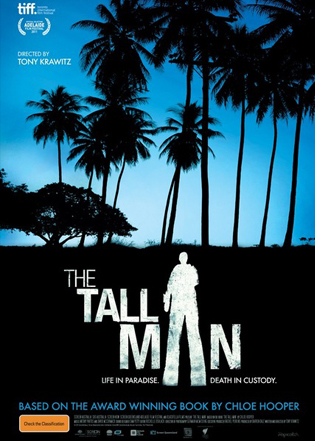

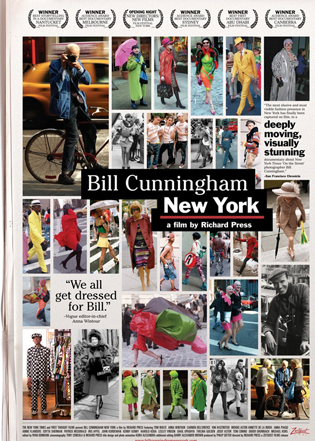


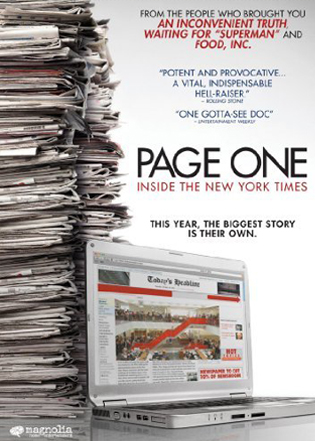





















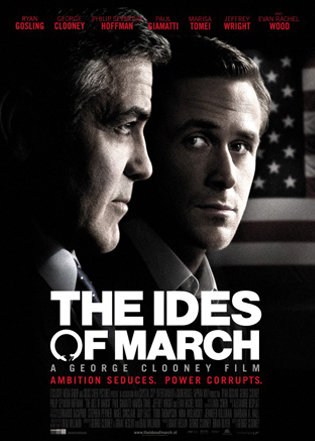
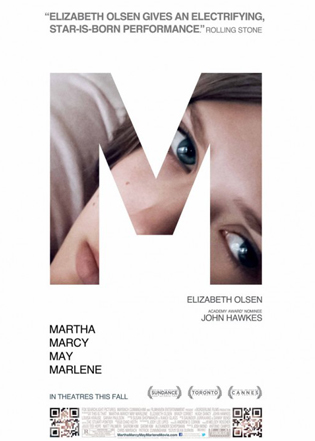





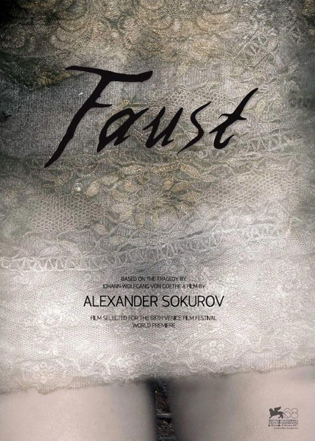
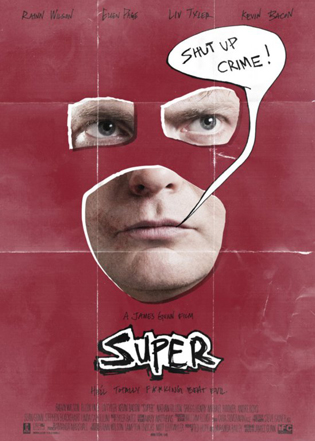





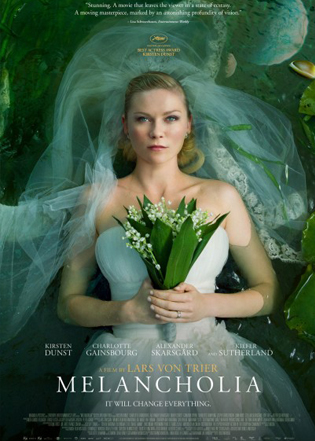








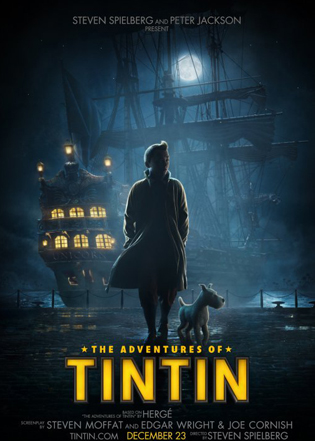



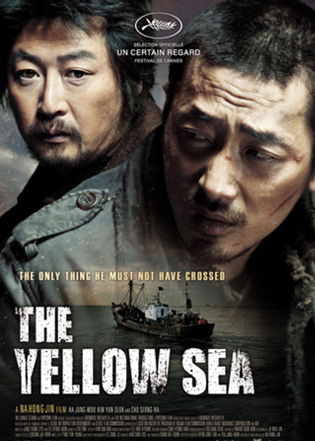


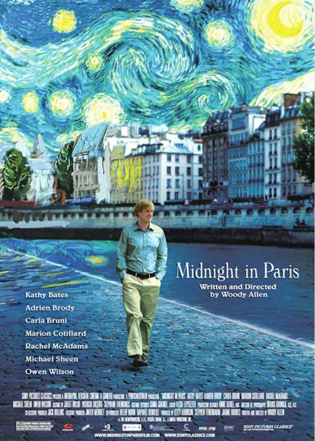
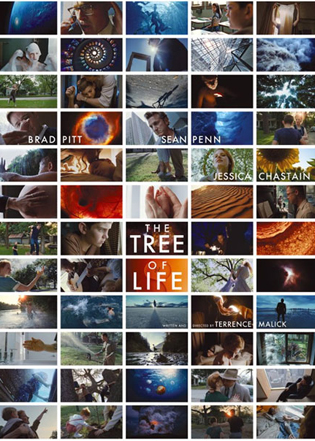

What about Incendies Lee? Surely that’s in Top Fifty contention. That was the first film I have ever watched where the entire cinema gasped in unison when the twist was revealed. Amazing reaction from a film, in a time when so many films are narratives-by-numbers. I judge a film by how it ‘stays with me’, and resonates with me as an audience member, hence why a lot of my fave films are not the coolest or well known ones.
Great list, will check a few of them out.
Love the show, loving the blog!
Finally figured out how to get the comments working! Incendies is one I missed out on, frustratingly! Looking forward to seeing it.
Have been loving reading the countdown as it progresses each day, but was largely compelled to comment/cheer at the shout-out to NT Live. Alas that I only saw FRANKENSTEIN! It (and the striking difference that small changes between the two versions made) stimulated my mind more than anything else I’ve seen this year.